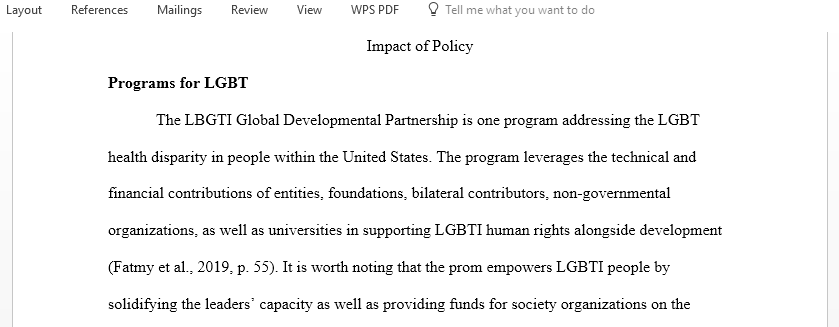Public Health Policy Review
Public Health Policy Review
Using data gathered from the text, South University Online Library resources, and websites, research programs and policies that exist to address your chosen health concern or issue. On the basis of your research, create a 2- to 3-page report. In the report:
Identify two or three programs that have been in place to address the health concern or issue.
Explain whether these have been effective. Explain how you know this and identify any gaps in the data if present.
Identify a policy, if it exists, that aims to address the health concern or issue.
Describe the impact of this policy. Explain whether it should be changed and why.
Be sure to support your points for each of the components in parentheses with data from the program and outside research.
SUPPORTING LECTURE
Public health policy impacts your daily life, both personally and professionally. A smoking ban or mandatory immunization for children are examples of public health policy that affects each of us. Healthcare professionals in both medical and public health environments will be responsible for enforcing the laws and policies that have been passed to protect and preserve the public’s health. Knowing how public health policies are influenced by various factors will help you understand the complexity of competing forces that impact the passage of these policies.
Good policy analysis is an art as well as a science. From the scientific angle, facts and supporting data must be used to establish the background of the problem, the concerns of the stakeholders, and the bases for possible options. The art is how a recommendation can be fashioned from these facts into solutions that can be implemented in the reality of a politically charged world. Furthermore, there is an art to communicating the results of an analysis to effectively inform the client and the primary stakeholders as well as the media and general public, if necessary. The most rational course of action remains nothing more than an idea unless it gets the attention of those in a position to do something about it, whether it is a small group of decision makers or all the likely voters in the nation.
There are five components of policy analysis: the problem statement, the background section, the landscape section, the options section, and finally, the recommendation section. By the end of the policy analysis, all stakeholders and options should be clearly defined. The policy analysis should be concise and present the data in a straightforward and unbiased way. Charts and graphs are frequently used when comparing options to make it easy for readers to understand the data presented.
Components of Policy Analysis
Component
Description
Problem Statement
Defines the issues that need to be addressed in a clear and concise manner
Background Section
Provides facts needed to understand the issue to be addressed
Landscape Section
Examines the issues to be addressed through the lens of the stakeholders and others involved
Options Section
Identifies the steps and means to address the problem identified
Recommendation Section
Identifies the means to address the problem to be addressed
Answer preview for Public Health Policy Review

Access the full answer containing 640 words by clicking the below purchase button.
